Understanding user engagement is crucial for optimizing websites and applications. Engagement rate is a key metric that helps us gauge how users interact with our content, providing valuable insights into user behavior and preferences. In this article, we'll explore how to measure engagement rate and discuss various approaches, focusing on metrics such as visits, time on page, and more.
1. How to Measure Engagement Rate
Engagement rate is a metric that reflects the level of interaction users have with your content. It can be measured through different dimensions, such as clicks, shares, comments, and more. Essentially, it quantifies how active users are on your website or app, offering insights into the effectiveness of your UX design.
2. Approaches
There are multiple approaches to measuring engagement rate, each providing unique insights into user behavior. Some of the most common approaches include:
- Visits: Tracking the number of visits to your website or specific pages.
- Time on Page: Measuring how long users spend on a particular page.
- Click-Through Rate (CTR): Assessing the percentage of users who click on a specific link.
- Social Shares: Counting the number of times your content is shared on social media platforms.
- Comments and Feedback: Analyzing the quantity and quality of user comments and feedback.
3. Engagement Rate Through Visits
One of the simplest ways to measure engagement is by tracking the number of visits to your website or specific pages. This metric indicates how many users are interested enough to visit your site. However, while a high number of visits can be a positive sign, it doesn't always equate to high engagement. To get a more accurate picture, visits should be considered alongside other metrics. Moreover, it's essential to have intuitive navigation and well-organized content categories to ensure visitors can easily find what they're looking for. Effective site structure can significantly enhance user experience, leading to increased visits and engagement. Get a free consultation about the navigation audit service to increase your engagement rate.
Amazon
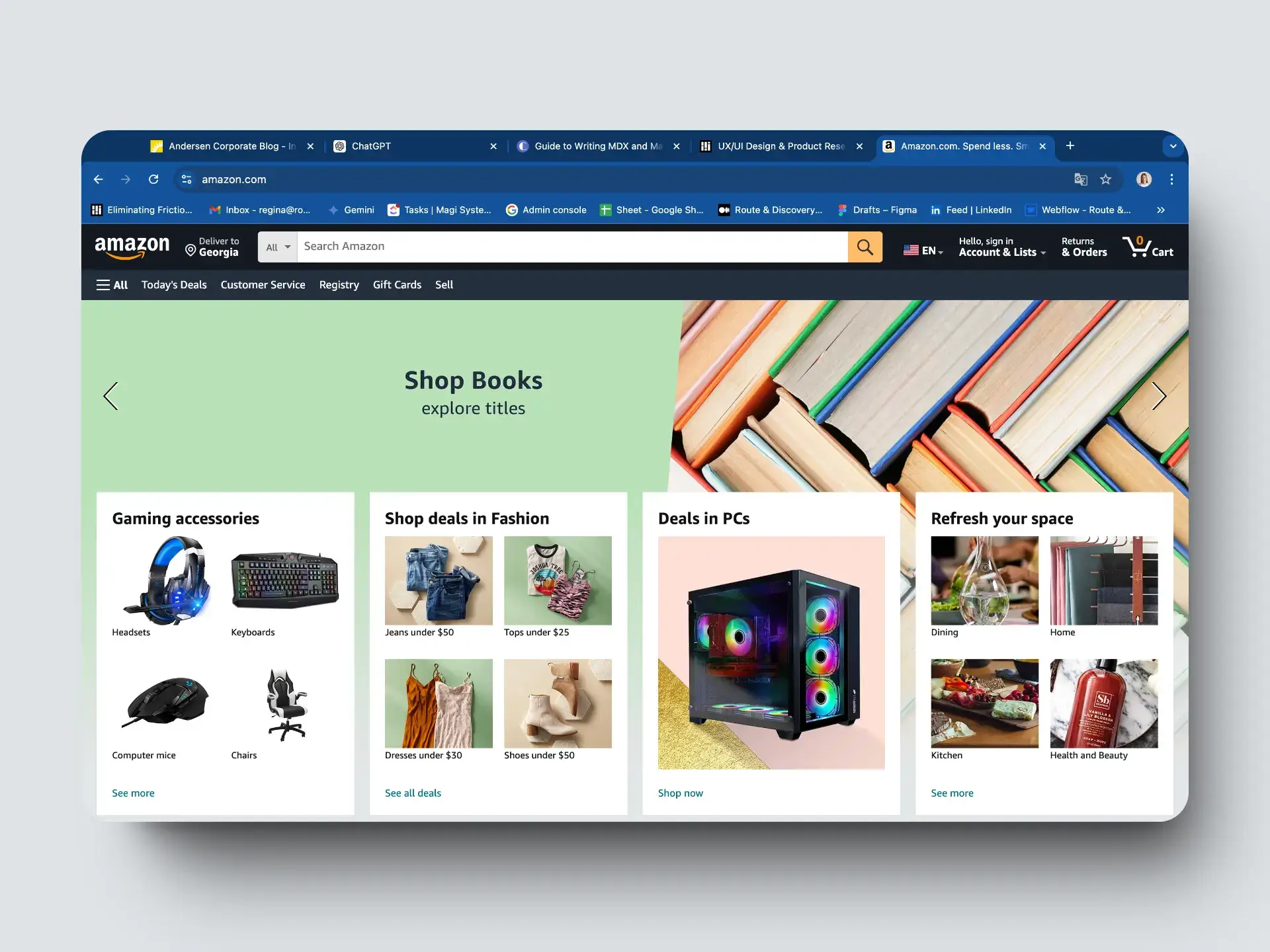 Amazon tracks visits to understand which product pages are most popular. Their highly effective navigation and categorization system allow users to easily find products, contributing to their high visit engagement rates.
Amazon tracks visits to understand which product pages are most popular. Their highly effective navigation and categorization system allow users to easily find products, contributing to their high visit engagement rates.
4. Engagement Rate Through Time on Page
Time on page is another essential metric for measuring engagement. It shows how long users spend on a particular page, providing insights into how engaging and valuable the content is. A longer time on page usually indicates that users find the content relevant and interesting. However, it's important to consider the context; for example, a long time on page for a simple task-oriented page might suggest user confusion rather than engagement.
Medium
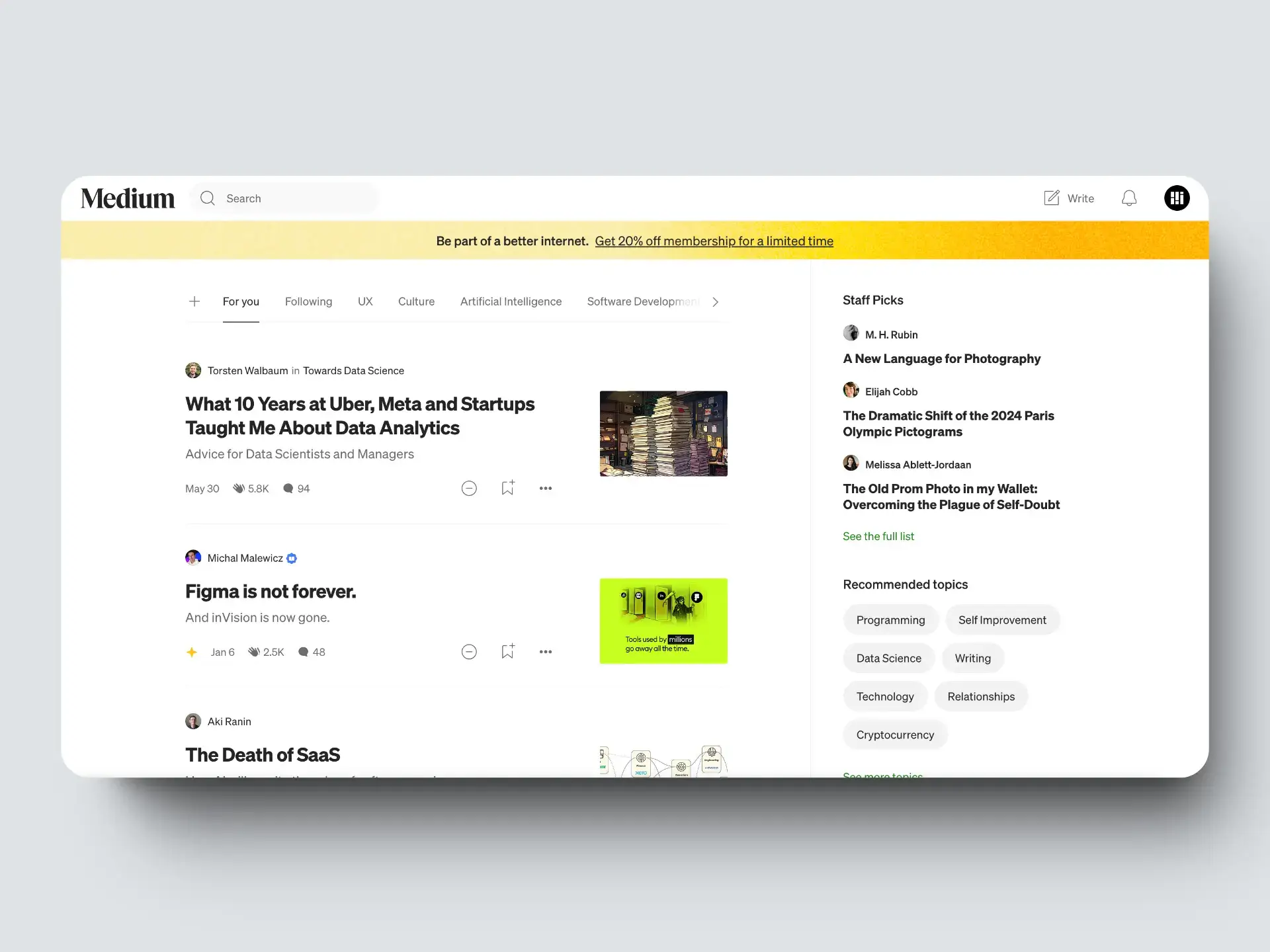 Medium, a popular blogging platform, measures time on page to determine how engaging and valuable readers find their articles. They often feature long-form content designed to keep readers engaged for extended periods.
Medium, a popular blogging platform, measures time on page to determine how engaging and valuable readers find their articles. They often feature long-form content designed to keep readers engaged for extended periods.
5. Engagement Rate Through Click-Through Rate (CTR)
Click-through rate (CTR) measures the percentage of users who click on a specific link or call-to-action (CTA) compared to the total number of users who view the page. A high CTR suggests that users are interested in your content and motivated to take the next step, whether it's signing up for a newsletter, downloading a resource, or making a purchase. To maximize CTR, it’s crucial to have a clear and logical navigation system in place, allowing users to easily locate and click on relevant links or CTAs. Well-structured navigation helps users seamlessly move through your site, enhancing their overall experience and increasing the likelihood of engagement.
HubSpot
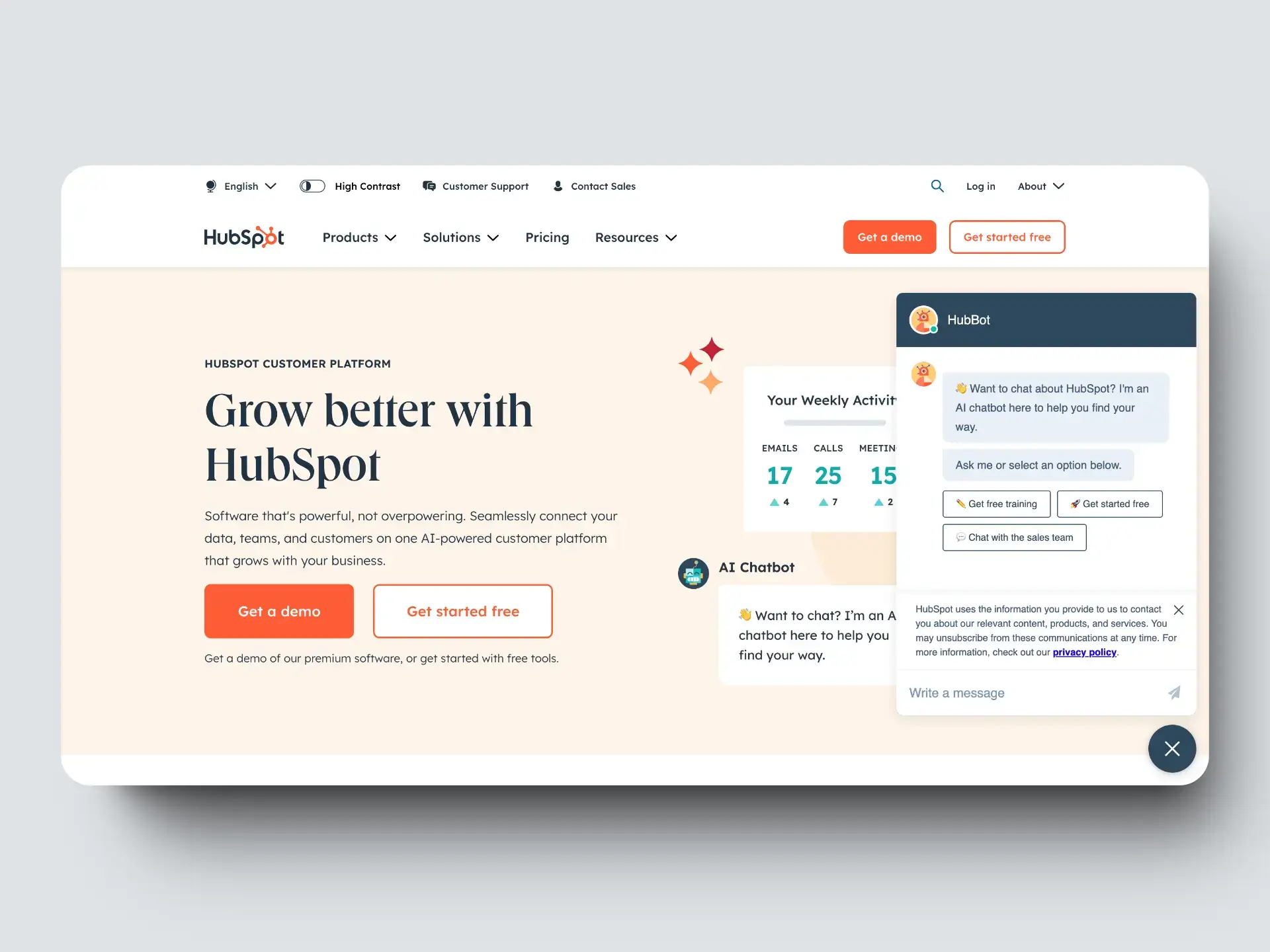 HubSpot effectively uses CTAs throughout their blog posts and landing pages to encourage users to download resources, sign up for webinars, and more. Their clear navigation and CTA placement contribute to a high CTR.
HubSpot effectively uses CTAs throughout their blog posts and landing pages to encourage users to download resources, sign up for webinars, and more. Their clear navigation and CTA placement contribute to a high CTR.
6. Engagement Rate Through Social Shares
Social shares are a powerful indicator of engagement, as they reflect how much users value your content and want to share it with their networks. High social share numbers can help boost your content's visibility and credibility, leading to increased traffic and engagement.
BuzzFeed
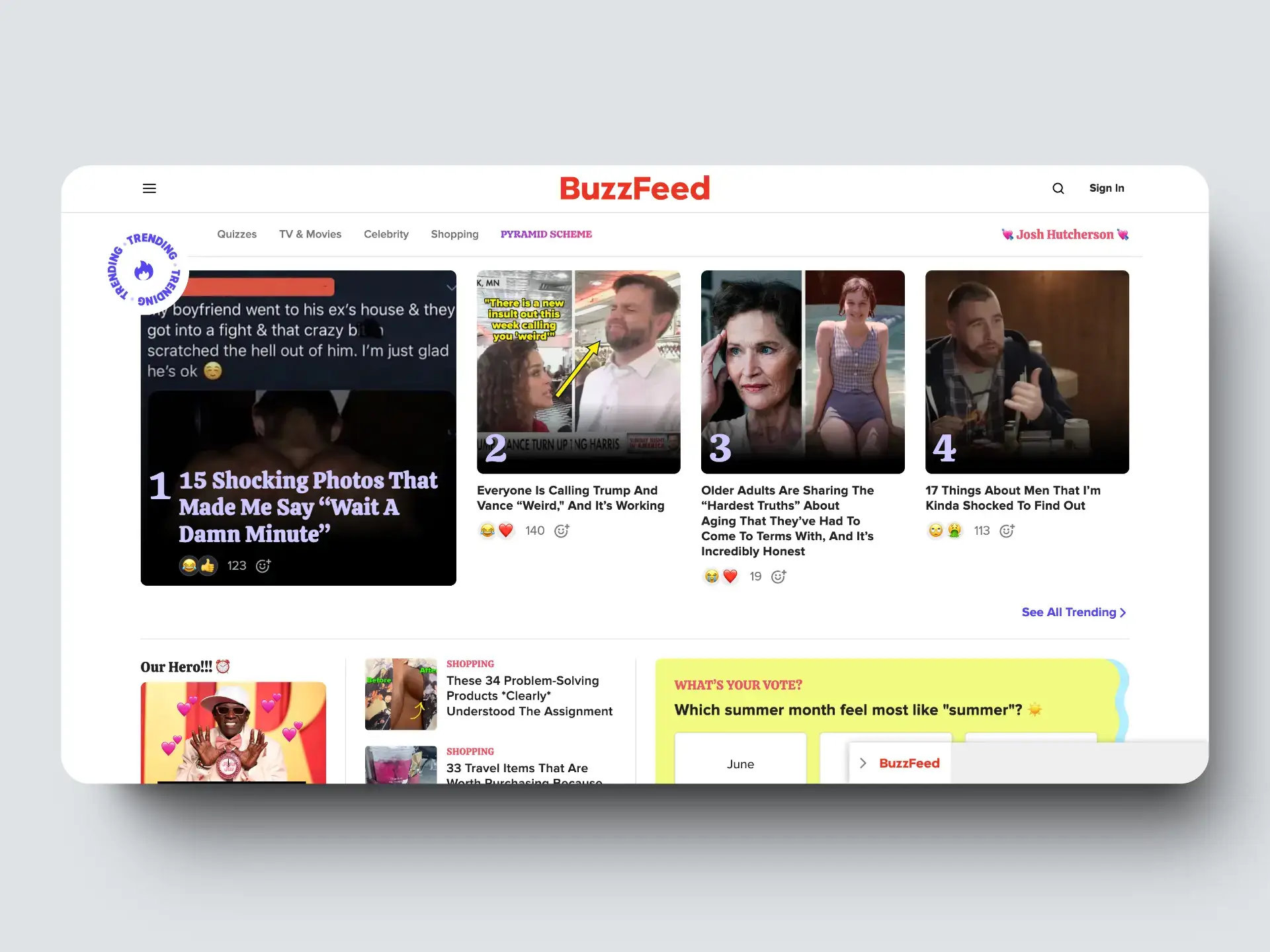 BuzzFeed creates highly shareable content, designed to go viral on social media platforms. Their articles and quizzes often see high engagement rates through social shares, driving significant traffic back to their site.
BuzzFeed creates highly shareable content, designed to go viral on social media platforms. Their articles and quizzes often see high engagement rates through social shares, driving significant traffic back to their site.
7. Engagement Rate Through Comments and Feedback
User comments and feedback provide direct insights into user engagement. By analyzing the quantity and quality of comments, you can gauge user interest and satisfaction. Positive feedback and constructive criticism can help you identify areas for improvement and enhance the overall user experience.
YouTube
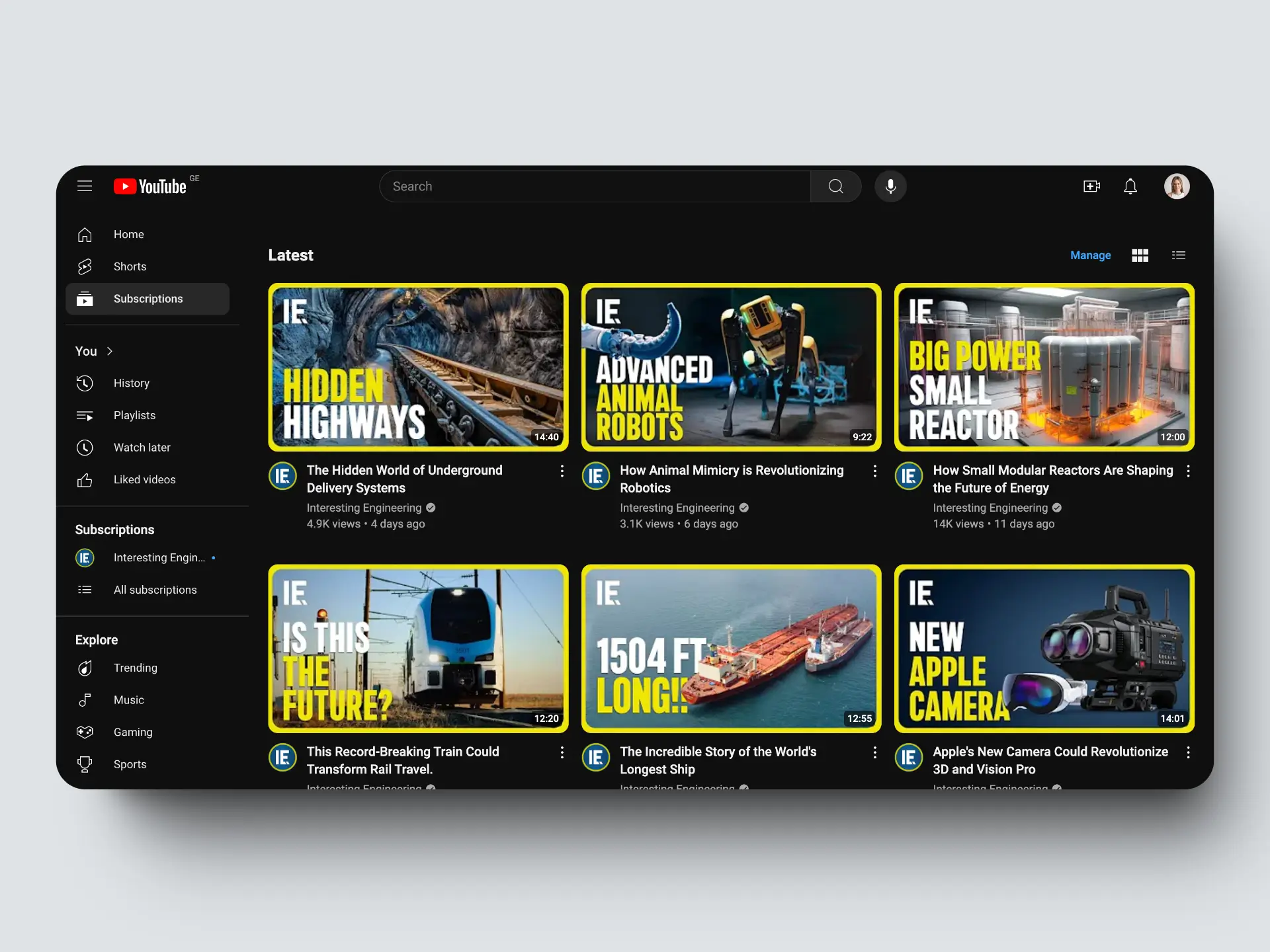 YouTube encourages users to leave comments on videos, providing a platform for engagement and feedback. High comment engagement can indicate a strong connection between the content creator and their audience.
YouTube encourages users to leave comments on videos, providing a platform for engagement and feedback. High comment engagement can indicate a strong connection between the content creator and their audience.
8. Combining Metrics for a Holistic View
While individual metrics are valuable, combining them offers a more comprehensive view of user engagement. By analyzing visits, time on page, CTR, social shares, and comments together, you can gain deeper insights into user behavior and preferences. This holistic approach allows you to identify trends, uncover patterns, and make informed decisions to optimize your UX design.
9. Defining the Right Way to Measure Engagement Rate Based on Product Category
Choosing the right way to measure engagement rate depends not just on the platform (website, app, or service) but also on the category of your product. As we already found out in our study on the optimal length of onboarding for apps of different categories, different categories require tailored metrics that align with specific user interactions and goals.
Social Media Platforms: For social media services, metrics like social shares, comments, and time on platform are crucial. These metrics reflect user interaction and engagement with social content. Twitter measures engagement through retweets, likes, and comments, reflecting how users interact with tweets and engage in conversations.
News Portals: For news websites, time on page, article completion rate, and repeat visits are important. These metrics help understand how readers engage with news content. The New York Times tracks metrics like time on page and repeat visits to gauge reader engagement with their articles.
E-commerce Sites: For online retail platforms, metrics like conversion rate, average session duration, and product page views are vital. These metrics show how users interact with products and make purchases.
Educational Apps: For learning apps, metrics such as session duration, completion rates of courses, and active users are significant. These metrics indicate user engagement with educational content. Duolingo measures engagement through metrics like lesson completion rates and daily active users to assess how learners engage with language courses.
Health and Fitness Apps: For health and fitness apps, metrics like active users, session frequency, and goal completions are key. These metrics reflect how users engage with fitness programs and track their progress. MyFitnessPal tracks metrics like daily active users and goal completions to understand user engagement with fitness and nutrition tracking.
Entertainment Platforms: For streaming services and entertainment apps, metrics such as watch time, session duration, and user ratings are crucial. These metrics show how users interact with and enjoy the content. Netflix measures engagement through watch time and user ratings to gauge how viewers interact with their content and what they prefer to watch.
Travel and Hospitality Services: For travel booking platforms and hospitality services, metrics like booking rates, user reviews, and repeat bookings are important. These metrics reflect user satisfaction and engagement with the services. Airbnb tracks metrics like booking rates and user reviews to understand guest engagement and satisfaction with listings.
10. Tools for Measuring Engagement Rate
There are several tools available to help measure engagement rate effectively. Some popular options include:
- Google Analytics: Offers a wide range of metrics and reports to track user engagement.
- Hotjar: Provides heatmaps, session recordings, and feedback tools to understand user interactions.
- Mixpanel: Focuses on user behavior analytics, helping you track events and user flows.
- Crazy Egg: Offers heatmaps and scroll maps to visualize user engagement.
11. Conclusion
Measuring engagement rate is essential for understanding user interactions and optimizing your prosuct perfomance. By leveraging various metrics and tools, you can gain valuable insights into user behavior, enhance the user experience, and ultimately drive better results for your website or app. Remember, the key to effective measurement is to use a combination of metrics tailored to your product category to get a holistic view of user engagement.





